We caught up with the brilliant and insightful Mayuko Ono Gray a few weeks ago and have shared our conversation below.
Hi Mayuko, thanks for joining us today. Earning a full time living from one’s creative career can be incredibly difficult. Have you been able to do so and if so, can you share some of the key parts of your journey and any important advice or lessons that might help creatives who haven’t been able to yet?
I have always worked day jobs and/or took care of my daughter as she was growing up, so I was never fully artist 100% of my time. The most recent positions I had were gallery director position at a local community college and instructor at an art school. I knew I was fortunate that I was at least working in art related field, but always felt like I was not using my time as I was meant to in this life time. However, working as gallery director position was such a learning experience seeing exhibitions and art handling from gallery operation aspects. I also were able to meet so many artists from exhibitions planning and attending conferences through college.
I find it difficult to balance what I really want to create and considering what would sell. I recently had an exhibition at the gallery I was represented at, and I was gearing up to create smaller works that would more likely to sell to individual collectors, but I just could not bring myself to do it. I think it is healthier to find day jobs to supplement income than trying to make art that would sell by compromising your artistic truth, or do commission works your heart does not want to do. Each one of us has 24 hours in a day- you can allocate 8 hours to day job, 8 hours to sleep, and there is the other 8 hours we can dedicate to making art, unless you have other obligations such as children.
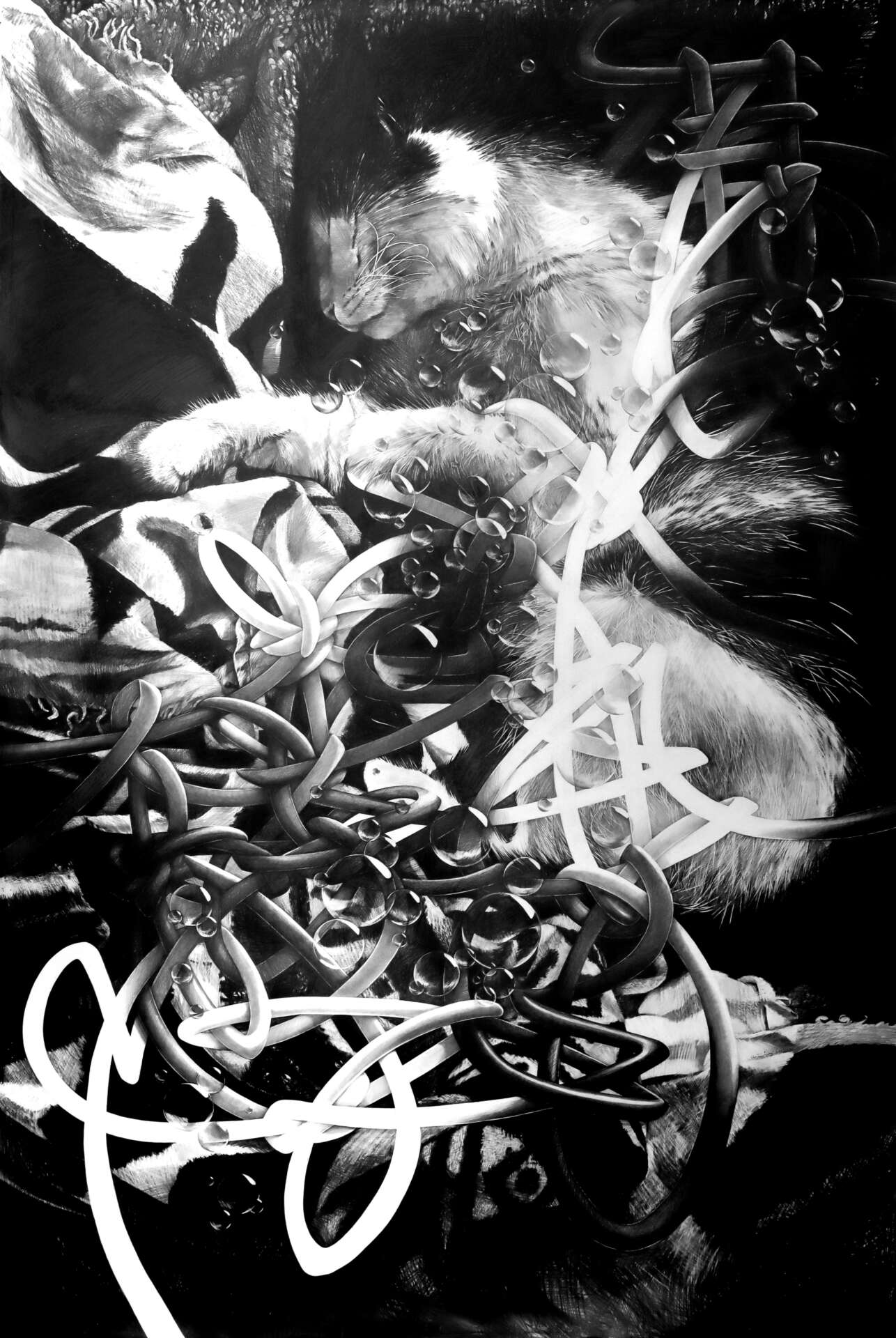
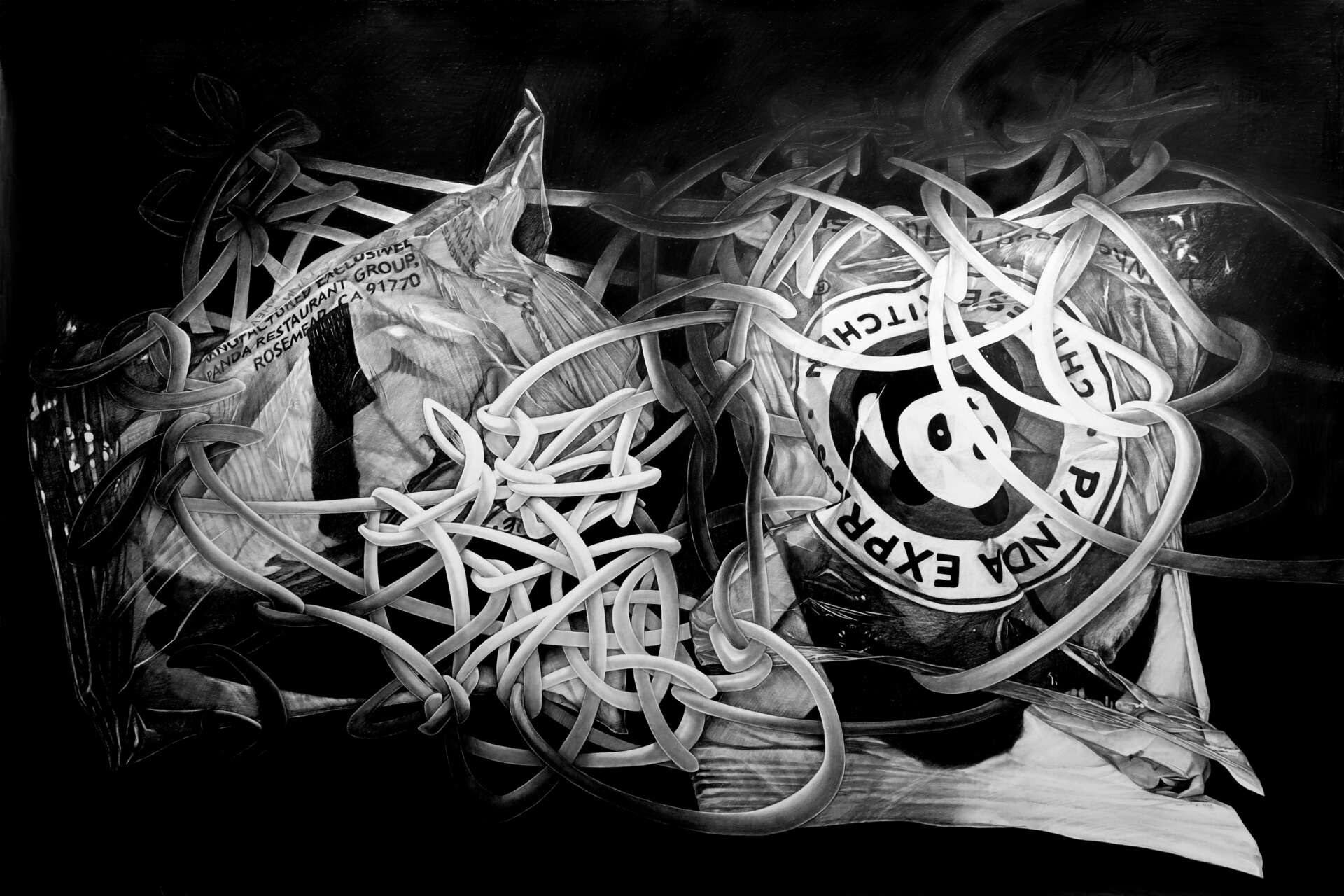
Awesome – so before we get into the rest of our questions, can you briefly introduce yourself to our readers.
Artist Statement: Mayuko Ono Gray Reflecting a life which is both culturally Japanese and American, my graphite drawings hybridize influences from traditional Japanese calligraphy combined with Western drawing practices and aesthetics.
Growing up in Japan, every Saturday afternoon was spent with my Sensei, a calligraphy master who would assign words for each of us to practice. We would spend hours producing copies of the Sensei’s sample. The goal was to imitate the sample, paying attention to the line quality, the varying speed, the pressure and angle of the brush movement. The handling of the brush had to become rhythmic and graceful.
At high school age, in preparation to entrance exam to art university in Japan, I had to take private lessons to learn drawing with graphite and charcoal practicing techniques such as chiaroscuro and sfumato. Saturday afternoons were replaced by a Western style art studio with pedestals, still lifes, and white marble copies of Roman busts, instead of tatami mat calligraphy studio sitting on the floor. The fluid ink was replaced with malleable graphite and ephemeral charcoal. The wet immediacy of calligraphic line was replaced with illusionistic volumes meticulously rendered. Instead of going through dozens of rice papers in a session, one sheet of high-quality cotton paper was given to work on.
Traditional Japanese art-forms have often integrated word and image, and my interest and practice also follow the path in my unique way. In my works I mostly use images of persons, animals, and still-lifes captured in my daily experiences. I assign a matching Japanese proverb to go with the image, which is spelled out with hiragana and kanji characters intertwined to create a single line. The calligraphic line begins at the top right and end toward the bottom left of the page, following traditional Japanese writing. The single line going through a pictorial plane is a metaphor of a life; the continuation of our life which begins with the birth and entrance to physical body, one exit as death and loss of physical body, and all the complicated path we take in between. Proverbs are short and poetic, yet powerful and true, resonating to us today confirming the never changing characteristics of human emotions and behavior, providing timeless lessons and teachings.
More recent works often incorporate the image of bubbles. Bubbles represent energy. In “pulsating still life” series, these are energy emitted by atoms which compose matter and form. Bubbles also represent our soul or spirit, which is invisible, yet we encompass along with our physical form. I create at least one self-portrait a year to record the sign and progress of my physical decay. As I age and my body continue to deteriorate, more I am fascinated by or want to believe in the existence of the intangible- soul or spirit.

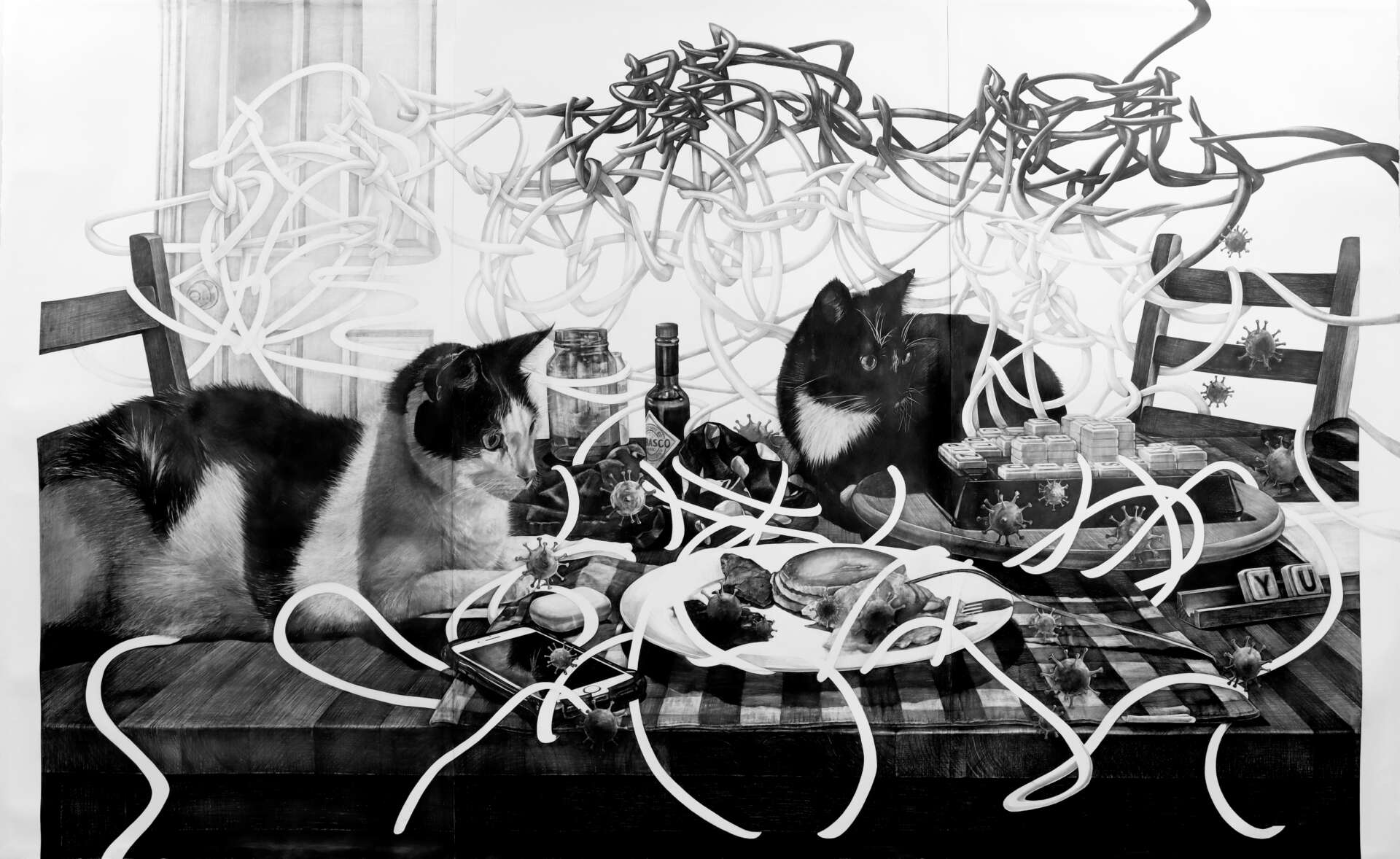
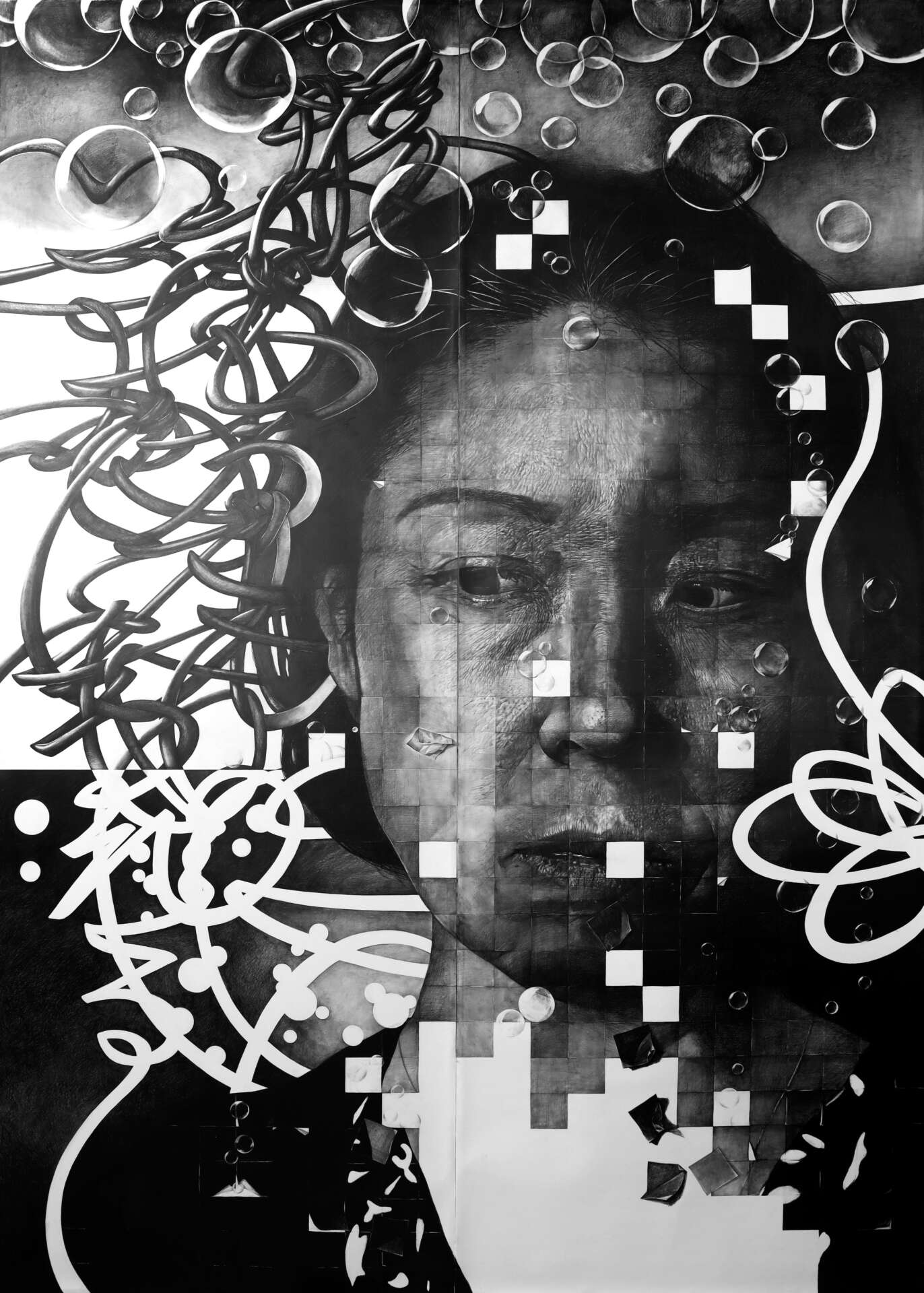
For you, what’s the most rewarding aspect of being a creative?
Creating art for me is a celebration of life, and it enables me to connect to the energy that is elevated from daily physical existence. Creating art is bringing this “being” that exists apart from me but yet carry my energy- like giving birth to children. I feel the happiest when people see my art and feel the energy, and tell me that they were touched by my work. I also love that I can make my own decisions in the process of art making- I never liked group projects! I also love that I can create my work in privacy, and at opening of exhibition I just need to show up and say to people- if you are musician or actor you need to perform live but as artist I don’t have to (:
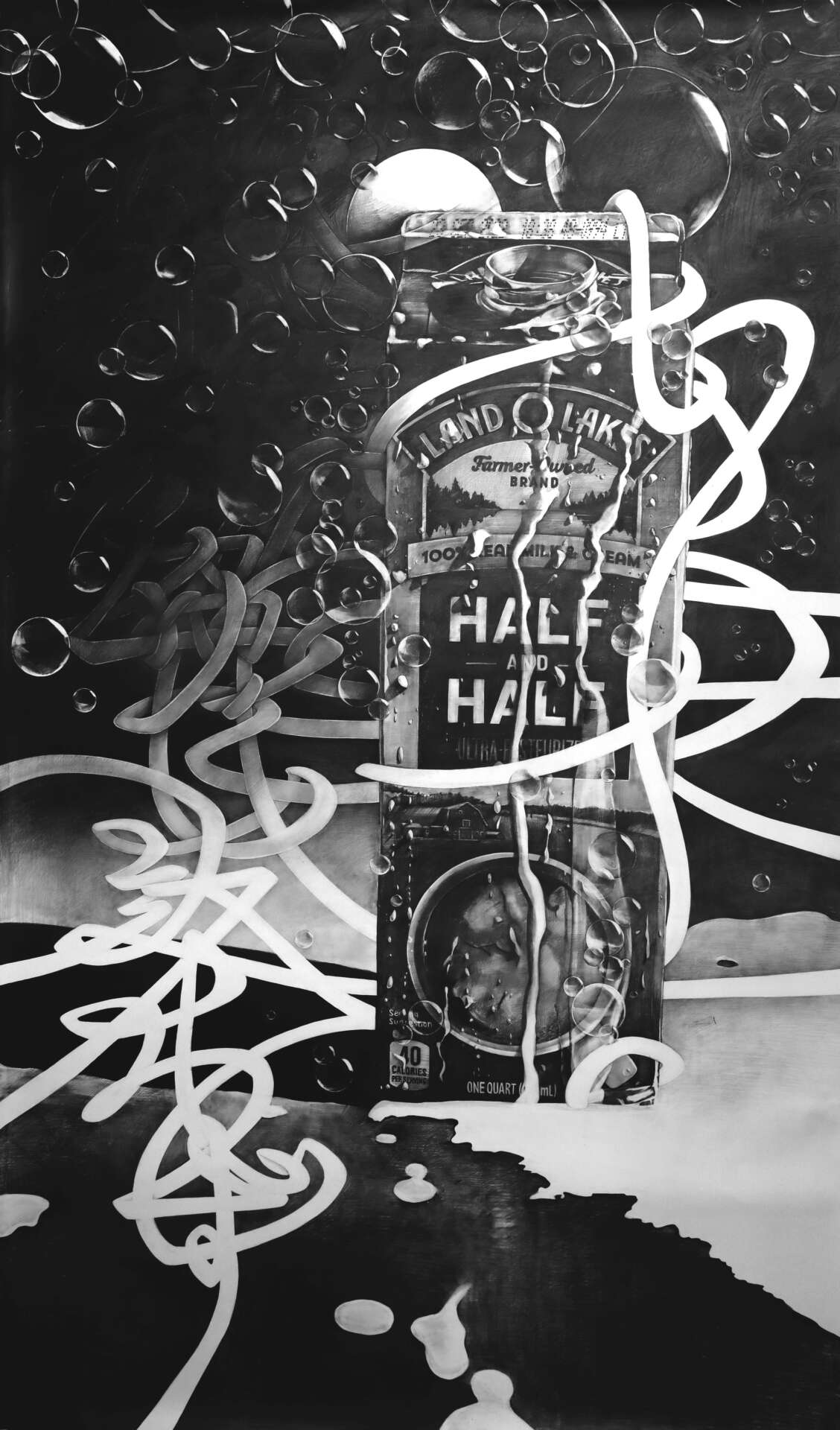

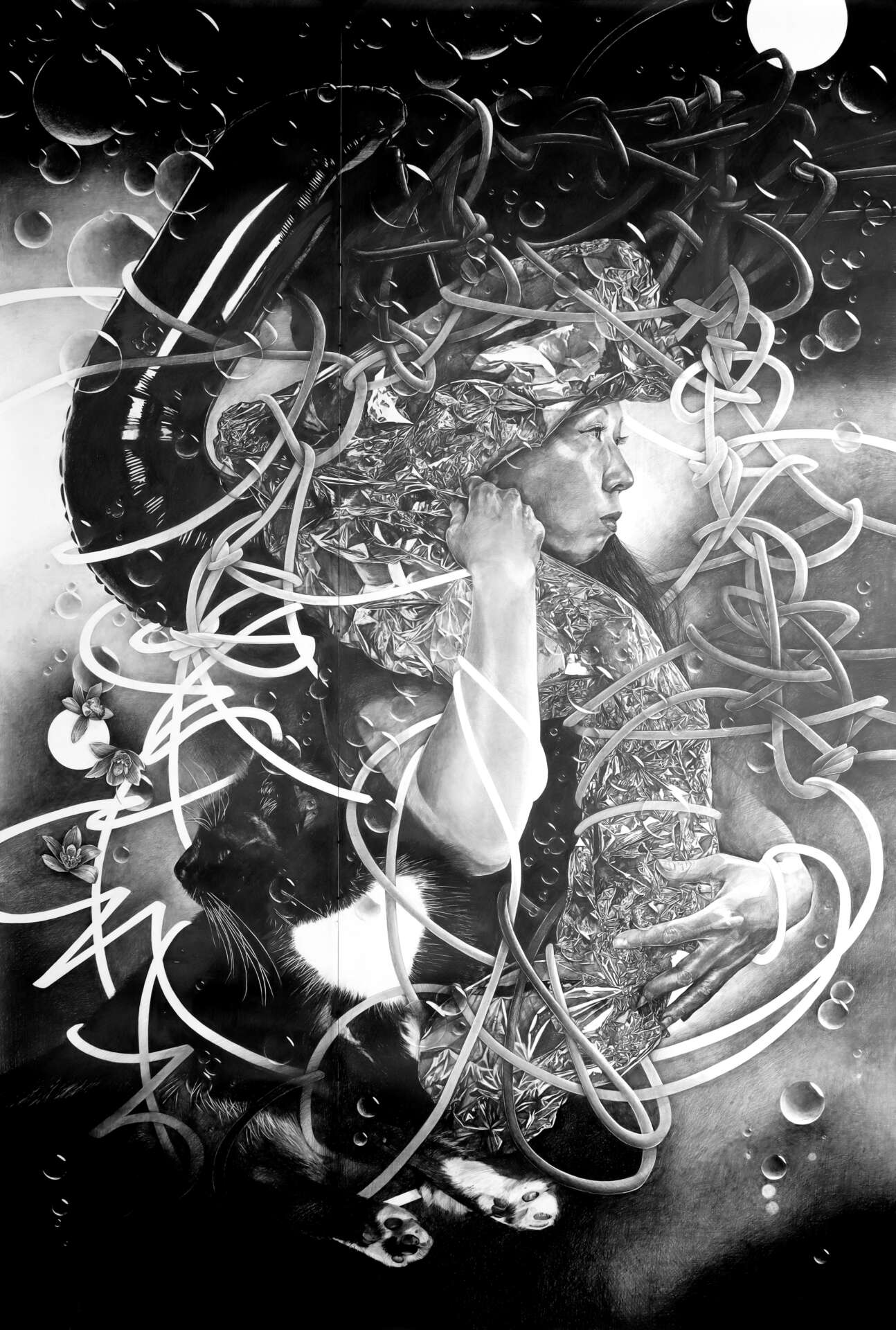
Looking back, are there any resources you wish you knew about earlier in your creative journey?
As artist it is important to look for opportunities proactively. In earlier times I thought if I made great works, somehow and somewhere I would be “discovered”. I feel now that it is a myth- don’t be lazy and/or arrogant and research all the opportunities our there, such as participating in juried shows in earlier career, and to submit exhibition proposals.
It is also important to network- show up to openings, especially for artists you know well- to show support and meet new people.
And, it is important for artists to have some organizational skills and professionalism. Create and keep up to date with own website, email etiquettes, posting pics and other art related news on social media regularly, meeting deadlines on important documents and shipping artworks in time- all these things are not fun to deal with, but absolutely necessary. For me, working as gallery director for 11 years dealing with all aspects of gallery operation really helped me see the importance of these.
Contact Info:
- Website: www.mayukoonogray.com
- Instagram: mayuko_ono_gray
- Other: Arts and Culture TX magazine: http://artsandculturetx.com/staying-in-the-moment-mayuko-ono-gray-at-galveston-arts-center/


